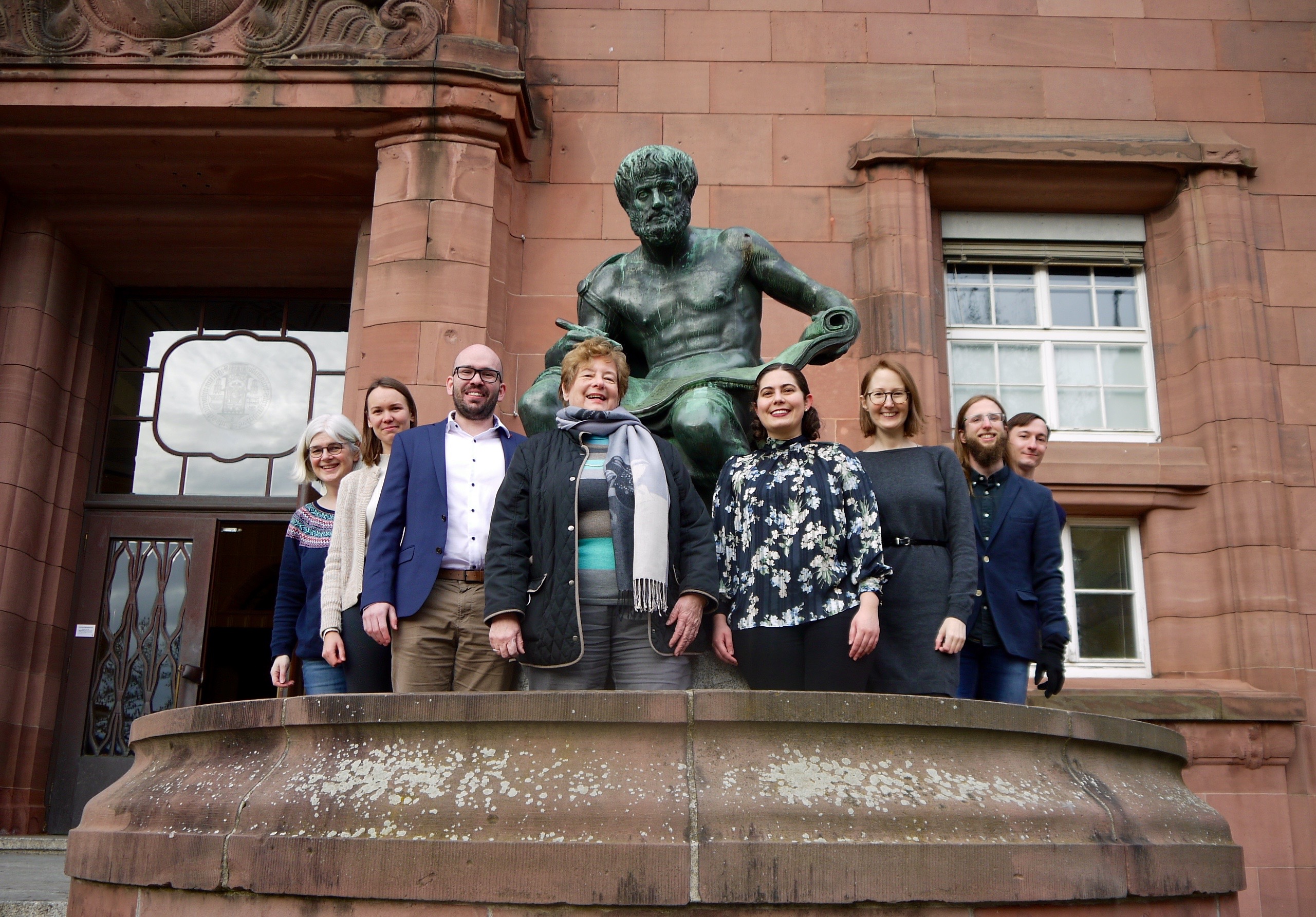Reinhart Koselleck-Projekt 'Diachronic Narratology'
Project duration/Projektlaufzeit: 1.10.2019-31.03.2025
The Koselleck Team. To see the profiles, click on 'Project Members' on the left .
Summary
The project Diachronic Narratology initiates a major innovative reorientation in narratological study by replacing the discipline's classical synchronism with a diachronic approach. From a diachronic perspective, the project will trace functional shifts and new narrative strategies in the history of English narrative, contrasting these changes with features that have remained of continuous relevance. It is the main aim of the project to identify and describe such paradigm shifts in the course of English narrative from the thirteenth century onwards and to then re-pose the question of narratology's universalist claims. Do the stages of the developments which have been outlined warrant the diagnosis that there are several discrete historically bound narratologies, or can the familiar categories of narratological analysis be contextually and historically inflected so that the current postclassical narratological paradigm is able to accommodate narratives across a historical range? If the latter aim is envisaged, this involves a significant challenge within the discipline, since the old static categories of narratology will have to be replaced by new flexible and historically sensible parameters. The risks of the project thus lie in the attempt to cover processes spanning a wide range of phenomena over time, to do so from a functional (rather than typological) perspective and to develop a new model of diachronic narratology that is able to do justice to the noted functional and processual aspects.
Narratologie diachron ist ein Projekt, das neue Horizonte in der Erzählforschung eröffnet, indem es die traditionelle synchrone Ausrichtung der Narratologie durch eine diachrone Orientierung ersetzt. Die Erzählforschung strukturalistischer Prägung ist in ihrem Kern eine synchrone Disziplin mit dem Anspruch auf Universalität ihrer Kategorien. Das vorgeschlagene Projekt initiiert eine diachrone Erzählforschung, die nicht nur die Erkenntnisse historischer Untersuchungen in das gängige Modell einbringt, sondern zusätzlich die Kontinuitäten und Form- sowie Funktionswechsel im Wandel der Erzählformen ab dem Spätmittelalter analysiert und theoretisch reflektiert. Am Ende soll eine Narratologie stehen, die diachron die Funktionsverschiebungen und Neuansätze in der Erzählpraxis zu dokumentieren vermag. Das Projekt will auch klären, ob es möglich sein wird, alle historisch beobachtbaren Phänomene in einem Erzählmodell zu integrieren oder ob separate historische Narratologien für einzelne Epochen die Fakten adäquater zu beschreiben imstande sind. Insofern als ein neues, flexibles und historische Entwicklungen integrierendes Erzählmodell geschaffen werden soll, ist das Projekt risikobehaftet, da es statische Kategorien der klassischen Erzählforschung in dynamische umwandeln und diese in einem neuen narratologischen Rahmen aufzubereiten versucht. Risiken liegen auch in der anvisierten Materialfülle und in der Aufbereitung der narrativen Entwicklungen unter dem Aspekt von Funktionsverschiebungen, die systematische Analysen der einzelnen narrativen Systeme erlauben.
Project outline
Topic. Narratology, in its structuralist manifestation, was a predominantly synchronic enterprise that aimed at providing an analysis of narratives by means of universally valid descriptive categories. Its main objective was to demonstrate how narratives 'work', proposing a narrative semantics and grammar based on the model of synchronic linguistics.
The project Diachronic Narratology initiates a major innovative reorientation in narratological study by tracing functional shifts and new narrative strategies in the history of English narrative. It is concerned with establishing continuities and discontinuities in the narrative discourse of texts from the late medieval period onwards. Like diachronic linguistics, diachronic narratology seeks to compare synchronic systems of narrative structure at various points on a historical scale in order to discuss to what extent the affordances of narrative remain the same or eliminate certain features and acquire new ones, thereby reshaping the system on the next temporal level. Thus, similar to the way in which sound shifts reorganize phonemic systems, key changes in the construction of narratives on the plot and discourse levels can be documented to result in new narrative systems. It is the main aim of the current project to document such paradigm shifts in the course of English narrative from the thirteenth century onwards and to then re-pose the question of narratology's universalist claims. Do the stages of the developments which the research has identified warrant the diagnosis of distinct narratological paradigms for each historical period, or can the categories of narratological analysis familiar from classical narratology be historically inflected so that the current postclassical narratological paradigm is able to accommodate narratives across historical periods? The challenge of the project is to find how functional parameters can be integrated into what are traditionally static and descriptive categories in the narratological paradigm.


